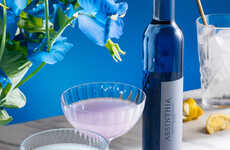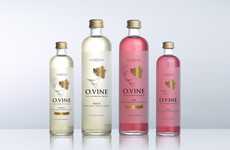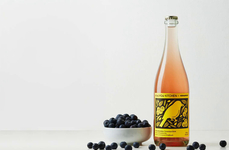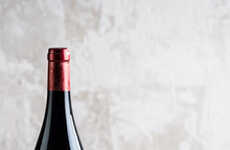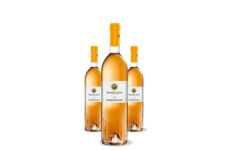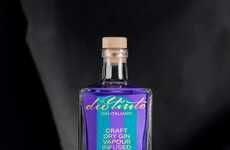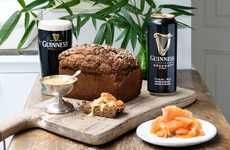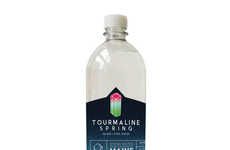
Vindigo is a Unique Blue Wine Hoping to Expand in France & Europe
Justin Lam — August 16, 2018 — Lifestyle
References: decanter & thedrinksbusiness
Wine is generally thought of as either red or white but French entrepreneur René Le Bail is hoping to introduce blue wine to his fellow countrymen through the launch of Vindigo. Vindigo is currently being produced in Spain, after Le Bail first to tried to get the wine made in France, but was faced with resistance. Despite the initial reactions to the product, Vindigo blue wine has grown in popularity and its expansion into France will also be met with introductions into the UK, China, Indonesia, Italy and Belgium.
The process of crafting the blue wine is done with all-natural ingredients and comes from a pigment found in red grape skins, known as anthocyanin. This ingredient only changes the color of the wine, providing a sea blue pigmentation and has no effect on flavor or texture. According to Le Bail, Vindigo features aromas of cherry, blackberry and passion fruit, and pairs well with seafood and oysters.
The process of crafting the blue wine is done with all-natural ingredients and comes from a pigment found in red grape skins, known as anthocyanin. This ingredient only changes the color of the wine, providing a sea blue pigmentation and has no effect on flavor or texture. According to Le Bail, Vindigo features aromas of cherry, blackberry and passion fruit, and pairs well with seafood and oysters.
Trend Themes
1. All-natural Colored Food and Beverage Products - The increasing demand for all-natural food and beverage products presents an opportunity for companies to innovate and incorporate natural colorants, like anthocyanin, into their products.
2. Unconventional Wine Flavors and Colors - Wine companies can create disruptive innovations by experimenting with unconventional flavors and colors that may appeal to newer and non-traditional wine drinkers.
3. Cross-cultural Wine Consumption - As Vindigo expands its market into different countries, there is an opportunity for companies to explore cross-cultural consumption trends and create unique wine products that cater to various cultural preferences.
Industry Implications
1. Food and Beverage - The food and beverage industry can innovate by developing all-natural products that contain natural colorants, like anthocyanin, that are both healthy and visually appealing.
2. Wine and Spirits - The wine and spirits industry can create disruptive innovations by experimenting with different flavors and colors that broaden the appeal of wine to newer and diverse markets.
3. Cross-cultural Marketing - Companies that specialize in cross-cultural marketing can benefit from the rising trend in cross-cultural wine consumption, by providing insights into the different cultural preferences and creating wine products that cater to these preferences.
2.4
Score
Popularity
Activity
Freshness


